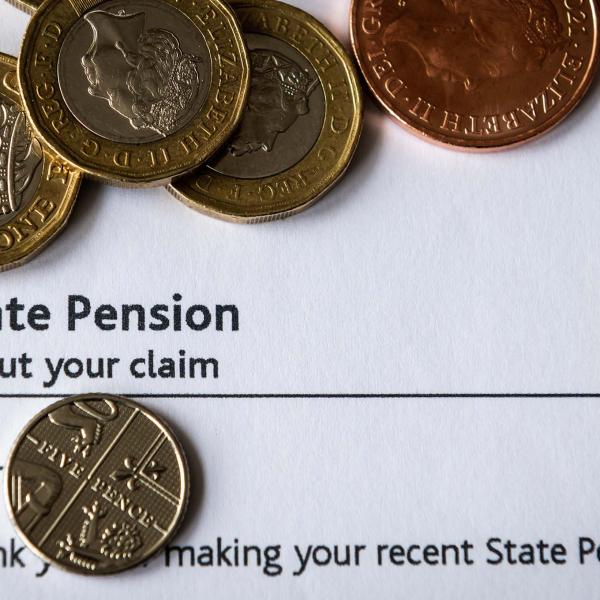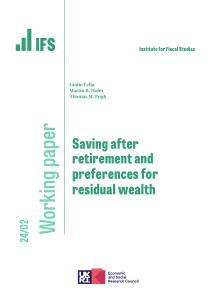This coming Sunday is Pensions Awareness Day – an initiative to raise awareness of retirement planning.
Why the fuss? There is considerable concern that some are not making adequate financial preparations for retirement. In some sense this is surprising – it is in people’s own interests to plan for their retirement. If they don’t save enough to maintain their standard of living when they leave the labour market, then it is them that will suffer from having less money to spend than they would have liked, or perhaps having to remain in paid work longer than expected. Given that, why would people not make appropriate decisions?
There are three fundamental problems: people are not well informed, planning for the future requires difficult calculations, and people suffer from behavioural biases. This has always been the case – people are probably no worse now than they have always been – but changes in the pension landscape mean that this now matters much more.
Changes to pension provision
It used to be the case that the majority of pension provision was provided by the state or by occupational defined benefit pensions. Most employees didn’t have to make many choices, they simply paid their taxes or the required contributions to their employer, and then when they received a particular age they would start receiving a pension each year. However, increasing life expectancies and declining asset returns meant the cost of providing such pensions, to the state and to employers, spiralled. In response, defined benefit pensions have largely closed down in the private sector and the government has withdrawn from providing anything more than a subsistence level of income in retirement. There were always gaps in this provision – in particular among groups like married women with caring responsibilities and the self-employed. But today, with the notable exception of public-sector workers, most need to save for retirement in a defined contribution pension.
Defined contribution pensions are cannot be accessed until age 55, but in other respects are very flexible saving vehicles. People can choose how much to pay in and when, what assets the accumulated fund is invested in, and now even exactly when and how they will draw out their savings. There is therefore great choice – but with that comes great responsibility. People need to work out for themselves how long a retirement they want to finance (taking into account their life expectancy and when they would like to retire), what income they would like, and what saving is required each year to get them there. They then need to implement those plans. That’s all hard. Many will make good use of these freedoms, but others will doubtless struggle.
Automatic enrolment will help. The vast majority of employees are now automatically enrolled into a pension by their employer, and most do not choose to leave. This has significantly boosted pension coverage among private sector employees. But the retirement income that would arise from a lifetime of default contributions will for many not translate into enough, and not everyone is covered by automatic enrolment. This is much better than an outcome where the majority of private sector employees do not save in a private pension. But many would be best advised to save more on top of the additional pension saving that automatic enrolment is inducing.
Do people understand pensions?
Responses to household surveys are revealing about the difficulties people feel they have with their retirement saving decisions. Only a minority of 35-44 year olds report either ‘strongly agreeing’ or ‘tending to agree’ with the statement “I feel I understand enough about pensions to make decisions about saving for retirement”.[1] Over two thirds report not having thought about how many years of retirement they might need to fund. Among 45 year olds, a quarter had not thought about what they expected their retirement income to be compared with their pre-retirement income.[2] Perhaps most concerning: over one-in-five 45 year olds think their income during retirement will be less than enough to meet their needs, while nearly one-in-ten do not know.
There is clearly some way to go in helping people make appropriate savings decisions and getting them better prepared for retirement. Hopefully events such as Pensions Awareness Day will encourage individuals to think about their savings plans and seek out the information that is out there to help them to make informed decisions.
Useful links:
- Know how long you’re likely to live: The ONS has a handy calculator here.
- Understand what you’ll get from the government: The full new state pension is currently around £8,767 per year, which can be claimed from the state pension age. Find out your state pension age here and check how much state pension you could get here.
- Consider how you personally would like to trade off: when you want to retire, how much retirement income you want, how much you want to save while working.
[1] Wealth and Assets Survey, 2014-2016 (Office for National Statistics, Social Survey Division. (2019). Wealth and Assets Survey, Waves 1-5, 2006-2016. [data collection]. 9th Edition. UK Data Service. SN: 7215, http://doi.org/10.5255/UKDA-SN-7215-9)
[2] Understanding Society, 2016-2018 (University of Essex. Institute for Social and Economic Research, NatCen Social Research, Kantar Public. (2018). Understanding Society: Waves 1-8, 2009-2017 and Harmonised BHPS: Waves 1-18, 1991-2009. [data collection]. 11th Edition. UK Data Service. SN: 6614, http://doi.org/10.5255/UKDA-SN-6614-12)








